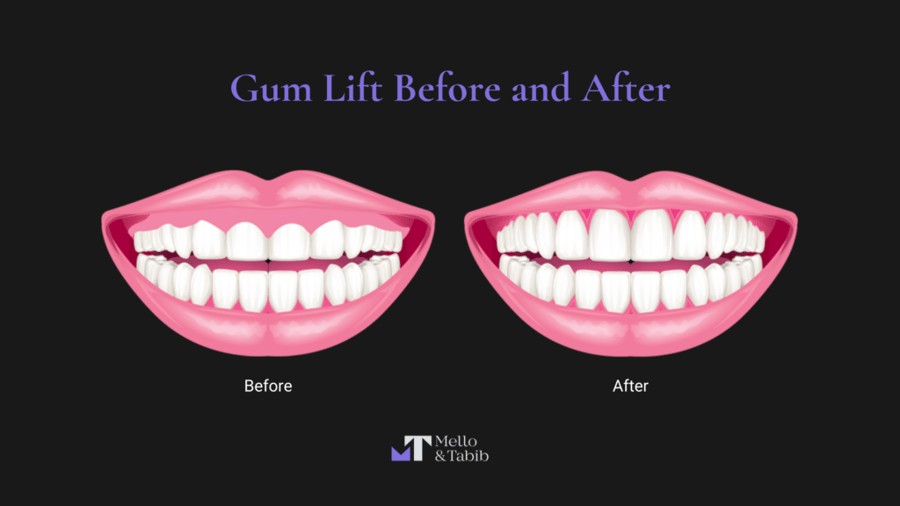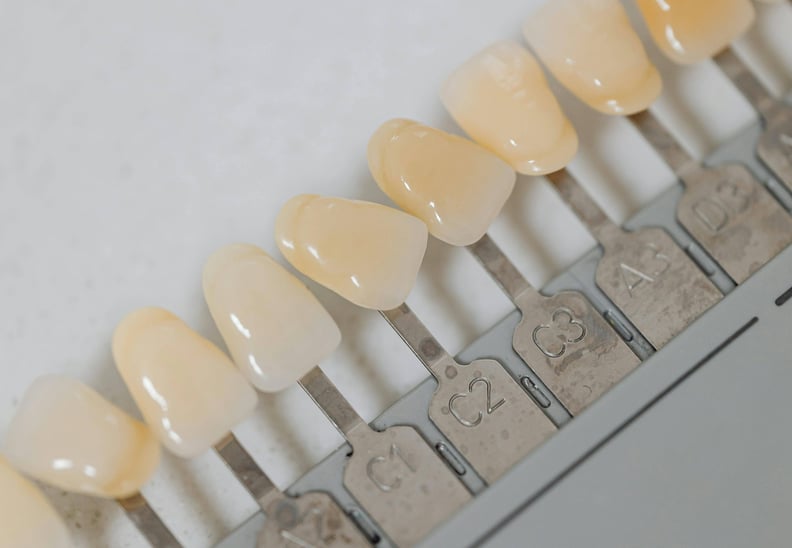Will I Need To Whiten My Teeth After A Gum Removal?
February 21st, 2024 | 4 min read

Gum removal, a common dental procedure for treating various gum issues, can sometimes lead to questions about the appearance of one’s teeth.
Whether you’re concerned about color changes or overall smile aesthetics, NYC Smile Design can help you make informed decisions about your dental health and appearance post-gum removal.
This blog aims to provide valuable insights into whether teeth whitening might be necessary following a gum removal procedure. We will delve into the potential effects of gum removal on tooth color and offer guidance for those considering post-procedure cosmetic dental care.
Understanding Gum Removal
Gum removal, also known as gingivectomy, is a dental procedure focused on the removal of excess or overgrown gum tissue. This treatment is essential in various dental health scenarios and also serves cosmetic purposes.

In terms of health, gum removal is often employed to treat gum disease. Overgrown gums can lead to the formation of deep pockets between the teeth and gums, which are breeding grounds for bacteria and infection. By removing this excess tissue, dentists can reduce these pockets, thus addressing the root of periodontal issues and helping to prevent further oral health complications.
Gum removal also plays a significant role in facilitating other dental treatments. In some cases, excess gum tissue can obstruct the area that needs treatment, such as in the case of a cavity near the gum line. Removing a portion of the gum allows dentists to access and effectively treat such areas.
From a cosmetic standpoint, gum removal is a popular option for correcting a “gummy” smile, where an excessive amount of gum tissue covers the teeth. This procedure can dramatically alter a person’s smile by revealing more of the teeth, creating a more balanced and aesthetically pleasing appearance.
In summary, gum removal is a versatile procedure that addresses both health-related issues, such as gum disease, and cosmetic concerns like excessive gum visibility. Understanding its role and applications can help individuals recognize its importance in both maintaining oral health and enhancing the appearance of their smile.
Potential Effects on Tooth Color
After undergoing a gum removal procedure, it’s not uncommon for individuals to observe some changes in the appearance of their teeth. These changes are primarily related to the color of the newly exposed areas of the teeth. When gum tissue is removed, parts of the teeth that were previously covered and protected by the gums become visible.
This newly exposed tooth surface may exhibit a slightly different color than the rest of the tooth. The reason behind this color discrepancy often lies in the fact that these areas have been shielded from common external staining factors. Daily consumption of foods and drinks, which typically affects the color and appearance of the teeth, would not have impacted these covered areas in the same way. As a result, when these portions become exposed after gum removal, they might appear lighter due to the lack of similar exposure to staining agents.
Considering Teeth Whitening
When it comes to the decision of whether to whiten your teeth after a gum removal procedure, several factors come into play.
Assessing the Need for Whitening
The necessity for teeth whitening post-gum removal largely hinges on how the newly exposed areas of your teeth compare in color to the rest of your teeth. If there’s a noticeable difference that affects the aesthetic appeal of your smile, teeth whitening might be an option worth considering. This step can help in achieving a uniform color across all your teeth, enhancing the overall appearance of your smile.
Timing of Whitening Treatment
Deciding when to undergo teeth whitening after gum removal is crucial. Your dentist’s advice plays a pivotal role here. They will assess the healing process and sensitivity of your gums post-procedure before recommending the right time for whitening. This consideration ensures that the whitening process does not aggravate any sensitive areas or interfere with the healing process.
Professional Guidance
Consulting with your dentist is also vital in determining the most suitable whitening method. Post-procedure, your teeth and gums might be more sensitive than usual. Your dentist will take into account this increased sensitivity and the overall health of your teeth and gums when recommending a whitening treatment. Their professional guidance ensures that the method chosen not only achieves the desired aesthetic results but also maintains the integrity and health of your teeth and gums.

Cosmetic Dental Care After Gum Removal
Following a gum removal procedure, you might consider various cosmetic dental treatments to further enhance your smile. In addition to teeth whitening, options like veneers or bonding are popular choices, particularly in cases where the teeth’s structure has been impacted by the procedure, or there’s a preference for a more uniform and aesthetically pleasing appearance.
Veneers are a common solution for addressing any discrepancies in the shape, size, or color of the teeth that become more apparent after gum removal. They are thin, custom-made shells designed to cover the front surface of the teeth, providing a new, improved look. Veneers are particularly beneficial if the gum removal procedure results in teeth appearing too long or misshapen, helping to create a more balanced and harmonious smile.

Dental bonding, another effective cosmetic treatment, involves applying a tooth-colored resin material to the teeth. This material is then hardened with a special light, which ultimately bonds the material to the tooth to restore or improve a person’s smile. Bonding is an excellent option for minor cosmetic changes, for temporary correction of cosmetic defects, and for fixing teeth impacted by the gum removal procedure.
Both veneers and bonding can be tailored to match the color of your existing teeth, ensuring a natural and cohesive look. It’s important to discuss with your dentist which option is best suited for your specific needs, taking into consideration the condition of your teeth post-gum removal and your overall aesthetic goals.
Conclusion: Personalized Cosmetic Care
Whether or not you will need to whiten your teeth after gum removal depends on various individual factors, including the extent of the procedure and your personal aesthetic goals. At NYC Smile Design, we are committed to providing comprehensive and personalized cosmetic dental care. If you have undergone gum removal or are considering the procedure and have concerns about the color of your teeth, we invite you to schedule a consultation with us. Our expert team will assess your specific needs and guide you toward the best cosmetic solutions to achieve a bright, healthy smile that you can be proud of. To explore your options and tailor a treatment plan that suits your individual needs, visit NYC Smile Design’s website and book your consultation today. Our goal is to help you achieve the beautiful smile you deserve with the care and expertise you can trust.
Topics:

